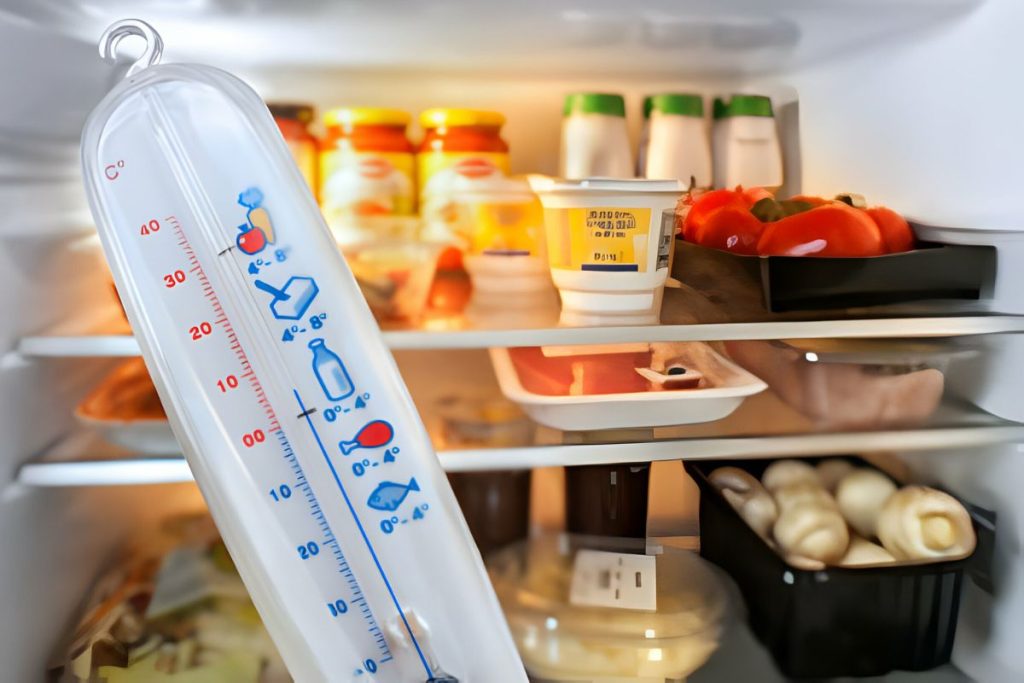Your kitchen’s silent protector, your refrigerator, works nonstop to preserve the freshness and safety of your food. But how can you be certain that it’s carrying out its job as effectively as possible? Presenting the unsung hero: the refrigerator thermometer. This tiny appliance, which is sometimes disregarded, is essential to maintaining food safety and halting rotting.
This blog explores the realm of refrigerator thermometers, supplying you with the necessary knowledge to select and utilize one appropriately.
Why is a Fridge Thermometer Important?
Foodborne infections can be unpleasant and even deadly in certain cases. Harmful germs like Salmonella and E. coli flourish in improper storage temperatures. The “danger zone” is defined as the temperature range between 40°F (4°C) and 140°F (60°C), where these bacteria flourish. The risk of bacterial development and foodborne illness is greatly decreased when you maintain your refrigerator at the recommended temperature of 40°F (4°C) or below.
Regretfully, thermometers that are integrated into most refrigerators are either extremely rare or have dubious accuracy. It is at this point that a specific refrigerator thermometer is useful. You can take charge of food safety since it gives you a dependable, independent reading of the real temperature inside your refrigerator.
Types of Fridge Thermometers
There are two main types of fridge thermometers:
- Analog Thermometers: The temperature is displayed on analog thermometers, which are the traditional type that employ a dial or a tube filled with liquid. Simple, inexpensive, and user-friendly are their qualities. As opposed to digital thermometers, some might not be as precise or straightforward to read.
- Digital thermometers: They display the temperature in either Celsius or Fahrenheit using an electronic display. Comparing digital thermometers to analog ones, they are typically simpler to see and more accurate. Some even come with extra functions like alarms that alert you when the temperature rises or falls below a predetermined point.
Choosing the Right Fridge Thermometer
Here are some key factors to consider when choosing a fridge thermometer:
- Accuracy: Seek for a thermometer with an accuracy of 0.5°C, or ±1°F.
- Durability: Look for a thermometer composed of materials that are strong enough to resist moisture and low temperatures.
- Visibility: In low light, the display ought to be readable and very clear.
- Features: A few thermometers come equipped with features including switchable temperature units, low battery indicators, and alerts.
- Location: Ideally, the thermometer should be mount on a middle shelf, away from walls or cold air vents, so that it can reliably record the average temperature inside the refrigerator.
Using Your Fridge Thermometer Effectively
- First Check: After receiving your thermometer, store it in the refrigerator and give it at least a day to stabilize the reading.
- Regularly Check: If the thermostat needs to be adjust, check the temperature of your refrigerator at least once a week.
- Placement Is Important: Keep the thermometer away from doors, walls, and cold air vents as they may not accurately reflect the temperature inside the refrigerator.
- Cleaning: Before putting your thermometer back in the refrigerator, give it a quick wash with warm, soapy water and make sure it dries completely.
Beyond the Basics
- App-connected Thermometers: Smartphone notifications and real-time temperature monitoring are provided by app-connected thermometers, which are ideal for tech-savvy people.
- Wireless thermometers : These provide a more complete view of temperature fluctuations since they can be positione throughout the refrigerator and send the temperature readings to a central receiver.
Conclusion
The peace of mind that comes with owning a refrigerator thermometer is well worth the minor investment. You can minimize food waste, preserve your food from spoiling, and protect your family’s health by maintaining the proper temperature for your food. To guarantee food safety and extend the shelf life of your food, keep in mind that the “Guardian of Groceries” is an essential item in your kitchen toolbox.

